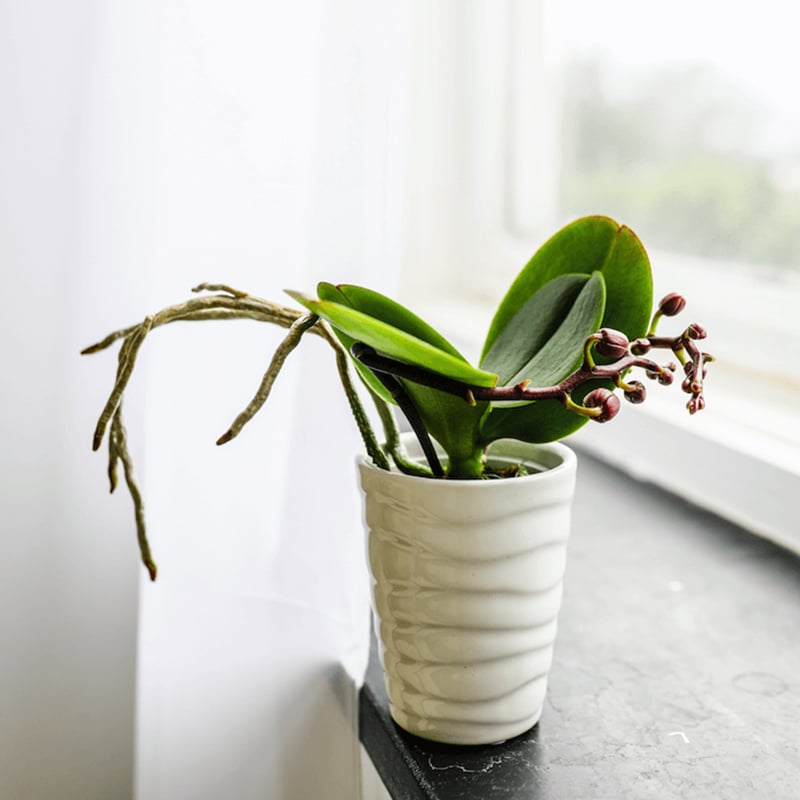
When an orchid has finished blooming, its blooms will wilt and fall off, making many orchid plant parents worry that their orchid has died. Don't panic! This is normal for orchids to do so before entering a resting period, allowing them to store energy for their eventual reblooming.
Yes, with some proper orchid care, those beautiful blooms will return!
How do you care for an orchid plant that's resting? Follow the tips below.
While caring for an orchid plant is both an art and a science, here are the basic care tips for your dormant orchid:
Just because your orchid no longer has its blooms doesn't mean you should stop watering it or reduce how much water you’re giving it. The roots and stems still need water to continue their growth.
Continue to water your orchid with three ice cubes (one ice cube for mini orchids) on the usual day each week. You can also use 1/4 a cup of water instead of cubes (1.5 tablespoons for minis) Sign up for our orchid care watering reminders so you don’t forget your watering day!
Orchids differ from traditional houseplants in many ways, including how they get their nutrients. Unlike houseplants that feed from their soil, orchids receive their nutrients from their fertilizer and potting medium.
These nutrients are especially important during the resting phase. For optimum health, fertilize your orchid every other week or once a month with a balanced fertilizer (20-20-20 or 10-10-10) mixed at half strength. Do not water your orchid during the weeks you fertilize.
Just like when it’s in full bloom, your orchid needs lots of indirect light during dormancy. Give your plant the light it craves while keeping it safe from sunburn by placing it behind a sheer curtain in a north or east-facing window.
Orchids love warm temperatures between 75- and 85-degrees Fahrenheit during the day. Like humans, they prefer cooler temperatures at night or when at rest.
Moving your orchid to a room with a temperature between 65 and 75 degrees for a couple of weeks during the resting period can help trigger reblooming.
In addition to losing its blooms, the orchid stem may dry and turn brown during dormancy. Its leaves may also take on a dull, faded appearance or become limp and flat. Try incorporating the orchid pot into a larger display of greenery from complementary plants such as mosses.
While it may look like your orchid is dead, if you learn how to care for an orchid plant that's resting, you can make your orchid plant’s next bloom the best one yet.
For more information about orchid reblooming, download this helpful guide!

Copyright Just Add Ice® Orchids 2023